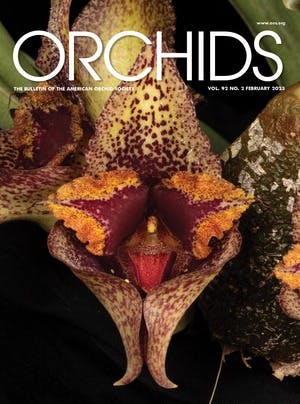
Insect growth regulators, or IGRs, are compounds that mimic the action of hormones that disrupt the molting process or modify growth and development in insect or mite pests. They don’t directly kill insect pests, but interfere with the normal mechanisms of development, resulting in insect pests dying before reaching the adult stage. In general, IGRs kill insect pests in 3–14 days; however, the particular IGR, the target insect pest, and the life stage may influence the time needed to kill the insect pest. Insect growth regulators tend to reduce pest populations over time — not immediately. Some IGRs may cause insect pests to stop feeding before they die. Also, certain IGRs may affect egg, larval, nymphal or pupal development. Furthermore, IGRs may inhibit metamorphosis (change in form) and negatively affect female reproduction and egg viability. Insect growth regulators are primarily used to kill the immature or young stages of plant-feeding insects, including caterpillars, fungus gnats, leaf miners, mealybugs, scales, shoreflies, thrips and whiteflies. This is the reason why application timing is important to maximize the effectiveness of IGRs. The short residual activity of IGRs and the fact that their longevity may be affected by exposure to ultraviolet light means that repeat or multiple applications are typically required. This article will discuss the activity of IGRs, insect physiology, classification of IGRs, side effects of IGRs and using IGRs against mealybugs and scales.
[1] A scale colony on a cattleya leaf. Notice the waxy covering that protects the actual insects.

INSECT GROWTH REGULATOR ACTIVITY
Thorough coverage of all plant parts, including leaves and flowers, is important to obtain adequate management of pest populations, and applications must be made when susceptible life stages are present. For example, many IGRs are more active on the early life stages, such as the first and second instars than on later instars. (Instar refers to the insect between molts.) This is why IGRs may take longer to manage insect pest populations, especially when dealing with overlapping generations. In addition, IGRs tend to be more active on those insect pests that undergo complete metamorphosis (egg,larvae, pupae and adult) than those that undergo incomplete metamorphosis (egg, nymph and adult). Because of their specificity, IGRs are typically less harmful to natural enemies, such as parasitoids and predators, than conventional broadspectrum insecticides. Before discussing the classifications of IGRs it is important first to understand the basics of insect physiology in order to comprehend how IGRs work on insect pests.
[2] A mature mealybug surrounded by its protective waxy deposit.

INSECT PHYSIOLOGY
Insect growth and development are regulated via a combination of hormones. Two compounds involved in regulating insect growth and development are ecdysone (molting hormone) and juvenile hormone. The levels of these two hormones may fluctuate and are countercyclical during natural growth and development. Ecdysone is responsible for regulating or triggering when insects molt and juvenile hormone determines whether or not an insect pest will molt into a juvenile form or regulates the body form (i.e., next instar) of the insect pest after molting. The absence of juvenile hormone starts the process of metamorphosis into the adult stage. The formation of the new skin and shedding of the old skin (exoskeleton) is called molting, a process regulated by these hormones. When an insect is ready to molt, a signal is sent to the insect’s brain resulting in the production of the prothoracicotropic hormone. This hormone is released into the hemolymph (blood), which stimulates the prothoracic glands to release ecdysone into the hemolymph. Ecdysone is hydroxylated (a chemical change that introduces an —OH [hydroxyl] group to a compound) to 20-hydroxyecdysone (20E). An increase in the levels of 20E initiates the molting process.
CLASSIFICATION OF INSECT GROWTH REGULATORS
Insect growth regulators may be grouped into three distinct categories based on the mode of action: 1) juvenile hormone mimics or analogs (agonists), 2) ecdysone antagonists and 3) chitin synthesis inhibitors. Juvenile hormone mimics or analogs suspend development, causing insect pests to remain in an immature stage, which prevents them from completing their life cycle. Ecdysone antagonists disrupt or interfere with the molting process of insect pests by inhibiting the metabolism of the molting hormone — ecdysone. Chitin synthesis inhibitors interfere with enzymes during the molting process that stimulate the synthesis and formation of chitin, which is an important component of an insect’s exoskeleton. As a result, insect pests fail to reach adulthood because they die in the immature stage, or they mature into sterile adults (male or female). However, it should be noted that there are differences among some of the chitin synthesis inhibitors associated with their activity on target insect pests. Diflubenzuron directly inhibits the production of chitin, a proteinlike compound responsible for the strength and resilience of the exocuticle (middle layer of the cuticle). Buprofezin prevents levels of 20E from declining during initial molting. If 20E levels are high during the molting period then the old cuticle (skin) will not be digested and the new cuticle will fail to develop properly. Cyromazine causes the cuticle to become abnormally rigid, resulting in a decrease in elasticity, which reduces the ability of insect pests to move and feed. There is a mite growth regulator, etoxazole, which is also classified as a chitin synthesis inhibitor. Etoxazole is a compound that inhibits the molting process during mite development. It is active on the eggs, larvae and nymphs with no direct effects on adult mites. Table 1 presents the commercially available IGRs associated with each category.

SIDE EFFECTS OF INSECT GROWTH REGULATORS
Although IGRs are primarily active on the young stages of insect pests, some IGRs may indirectly affect the adult stages by reducing reproduction or egg viability. Egg viability refers to those eggs that hatch into live young. Insect growth regulators may also suppress reproduction by inhibiting the formation of ovaries in the adult female. Consult the product label to determine those IGRs that have indirect effects on the adult stage of insect pests. The fact that certain IGRs indirectly affect the adult stages of particular insect pests is important in regard to pest management, as this means another developmental life stage may be negatively affected. Suppressing adult female reproduction is an important long-term pest management strategy that may decrease the number of individuals in future generations. This may result in fewer insecticide applications needed, which could reduce insecticide costs, minimize the potential for insecticide resistance and avoid exposure to residues.
MEALYBUGS AND SCALES Mealybugs and scales are major insect pests of many orchids. Insect growth regulators may be effective in alleviating problems with these two pests; however, coverage of all plant parts including leaves and flowers is important and multiple applications, at least once per week, will be required to reduce populations of both pests over time. In addition, the sheaths will have to be removed from certain orchid plants to expose mealybugs and scales to spray applications of IGRs. The IGRs that are labeled for use against mealybug, scale or both are kinoprene (Enstar II/AQ), buprofezin (Talus), fenoxycarb (Preclude) and azadirachtin (Azatin, Ornazin, MoltX, Azatrol, AzaGuard, Aza-Direct and AzaSol).
[3] Many orchids such as this cattleya produce protective leaf sheaths that dry as the growth matures.

[4] The protective leaf sheaths should be removed to minimize the development of hidden insect colonies. As a general rule of thumb, this removal and thorough cleaning should be part of your repotting technique.

SUMMARY
Insect growth regulators are a diverse group of compounds classified into three distinct categories based on mode of action: juvenile hormone mimics, ecdysone antagonists, and chitin synthesis inhibitors. Timing of application is important, as the susceptible life stage (or stages) must be present for IGRs to be effective in managing insect pest populations. Insect growth regulators must be applied early or when insect pests are first detected because IGRs are less effective when overlapping generations of insect pests occur because of the presence of different life stages. Insect growth regulators are effective in managing populations of many different types of insect and mite pests and may reduce the number of individuals in future generations. Because of their broad mode of activity, IGRs should always be incorporated into insecticide rotation programs to delay the development of resistance in insect pest populations.
—Raymond A. Cloyd, PhD, is Professor and Extension Specialist in Horticultural Entomology/Integrated Pest Management in the Department of Entomology at Kansas State University, 123 Waters Hall, Manhattan, Kansas 66506-4004 (email rcloyd@ksu.edu).











